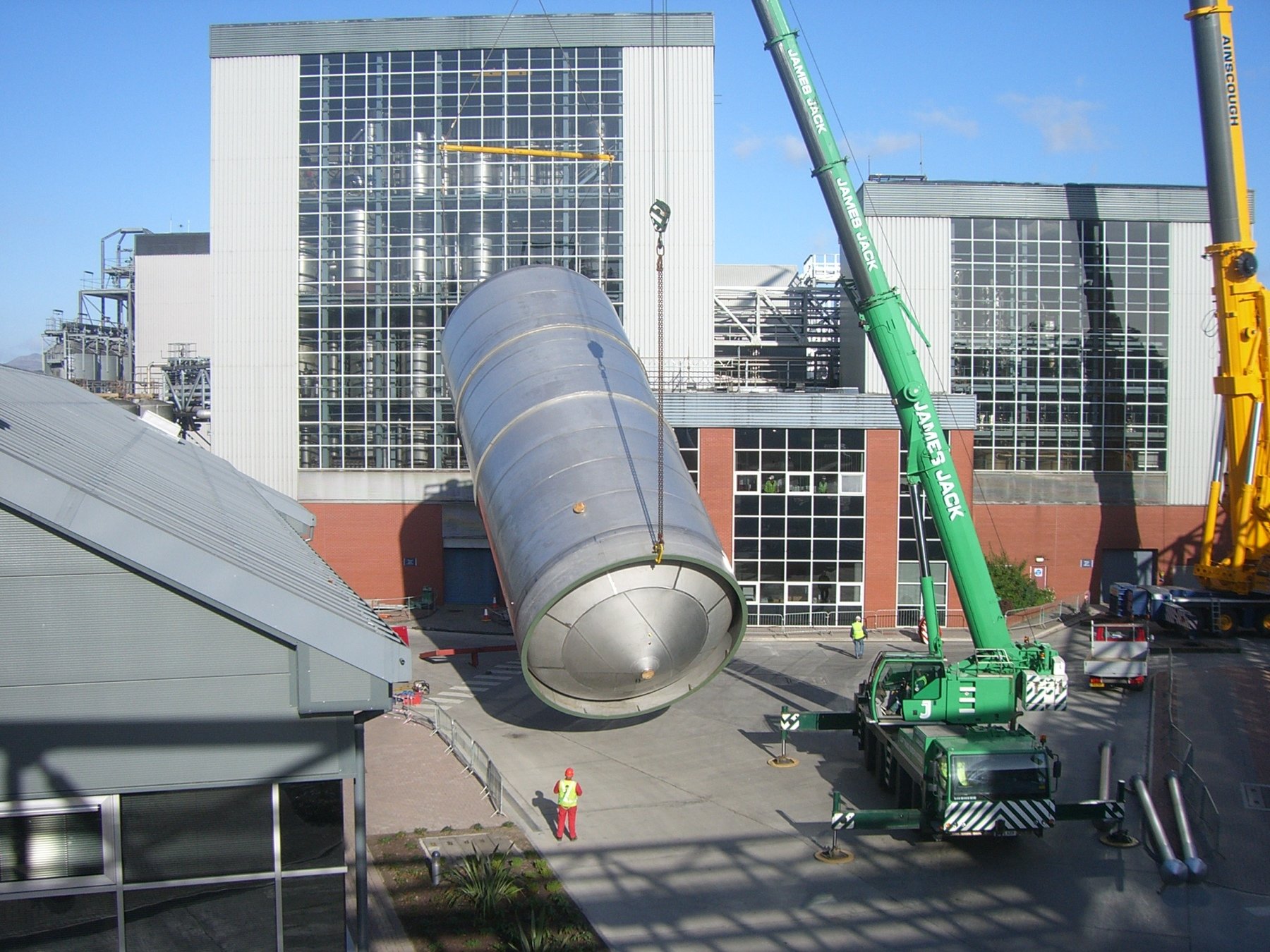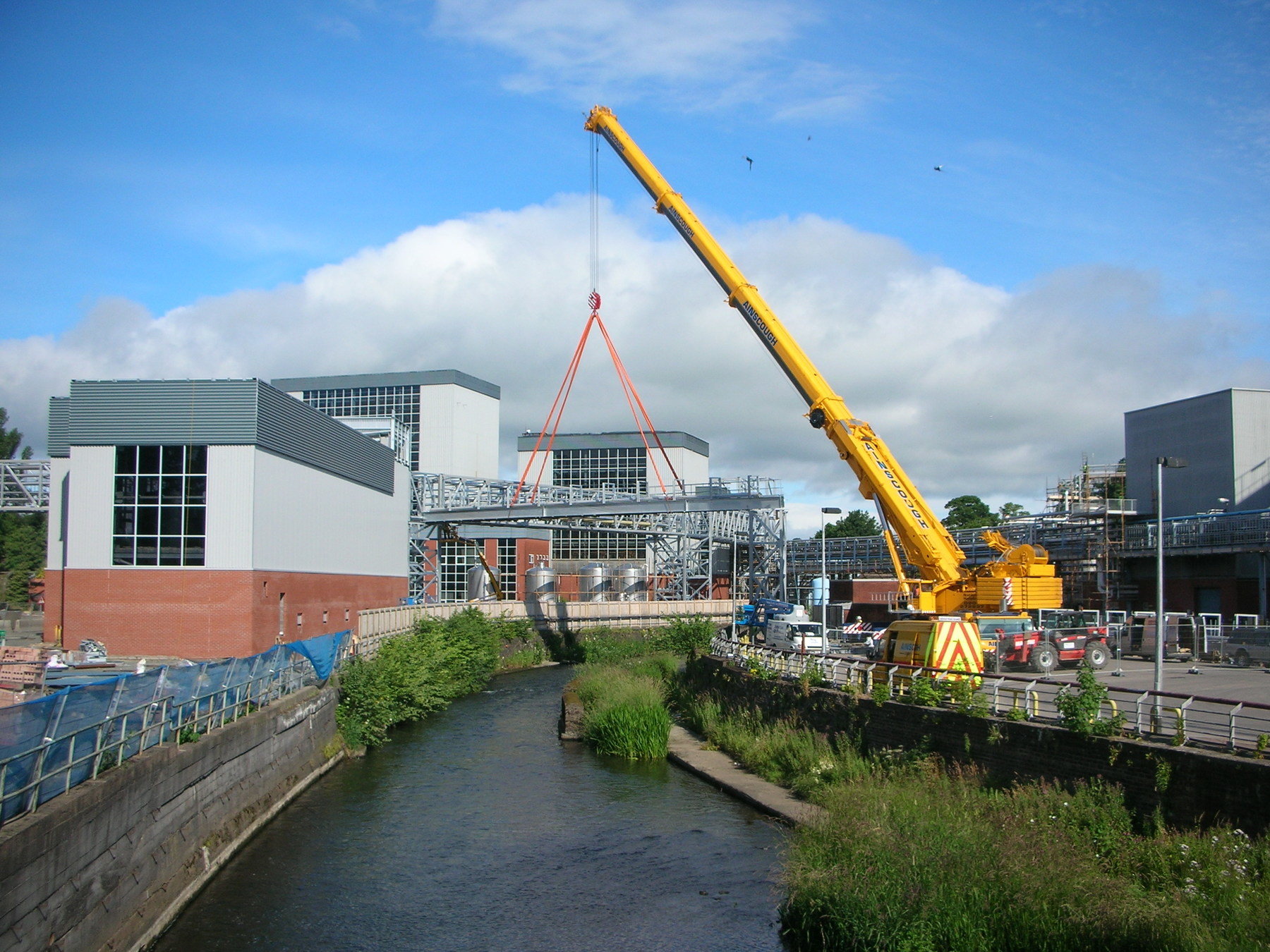Scottish Grain Distillery Expansion
Diageo’s ‘Project Forth’ has driven a host of improvements to procedures, operations and facilities at the Cameronbridge grain distillery in Scotland. Diageo’s mission was threefold: to deliver the project safely, to use ‘best available technology’ and leave a legacy of which all could be proud. The overall project spanned several years and is divided into four major but related projects with Briggs of Burton being heavily involved in Phases 2 and 3.
- Phase 2: upgrade fermentation and cleaning in place (CIP), all designed and managed by Briggs of Burton
- Phase 3: pre-distillation with all processing designed and built by Briggs of Burton
Briggs of Burton plc embarked on this project in 2007, fast-forward to today and after providing some 23 km of stainless steel pipe ranging in size 6 mm to 20-in, 4651 mainly valves and over 200 pumps, Diageo has achieved its originally specified mission statement. “Many of the changes made at Cameronbridge have seen adjustments, improvements or automation of traditional custom and practice procedures.”
Fermenting and Cleaning in Place (CIP)
- 16 wash backs each with 3600hl working capacity plus two 1300hl Yeast Optimisation Vessels (YOV)s all supplied out of The Netherlands by Holvrieka now part of Ziemann Holvrieka
- Dual Purpose Design to utilise Fermentation vessels as a temporary wash charger to maintain distillation supply throughout project life cycle
- The Wash is pumped to one of the four existing stills for processing into new grain spirit
- Spent wash from the stills is pumped to a new hydro-cyclone set where it is processed to produce clarified spent wash which is stored and used for ‘backset’ within the continous mashing process.
- Three separate CIP sets housed within new purpose built building
- A three-tank mains recovery CIP set delivers a pre rinse cycle, a hot cycle and a final rinse cycle
- A four-tank vessel CIP set delivers a pre rinse cycle, a warm caustic or cold acid cycle and a final rinse cycle
- A single use CIP set is utilised for cleaning yeast systems
Pre-distillation
- Controlled ratio of cooked wheat and Low Temperature Process (LTP) wheat and transfer for fermentation
- New 200 Te silo that supplies wheat to either the existing pressure cookers or new LTP streams
- Enzymatic activity is provided by a malt slurry distribution system
- Direct steam heated cookers each with a nominal capacity of 16 Te of un-milled wheat. Cooked mash is discharged under pressure, flashed and quench cooled before being transferred into a mash tun.
- Design and installation of Briggs Distillery mash tuns, which both continuous and batch process mashing to generate wort
- Wort line yeast pitching using either cream or ‘optimised’ yeast
- Installation of modular multi-stage wort heat exchanger to utilise site cooling media
- Distillery cream yeast is imported onto the site via road tanker and stored in two new tanks supplied by Briggs of Burton

